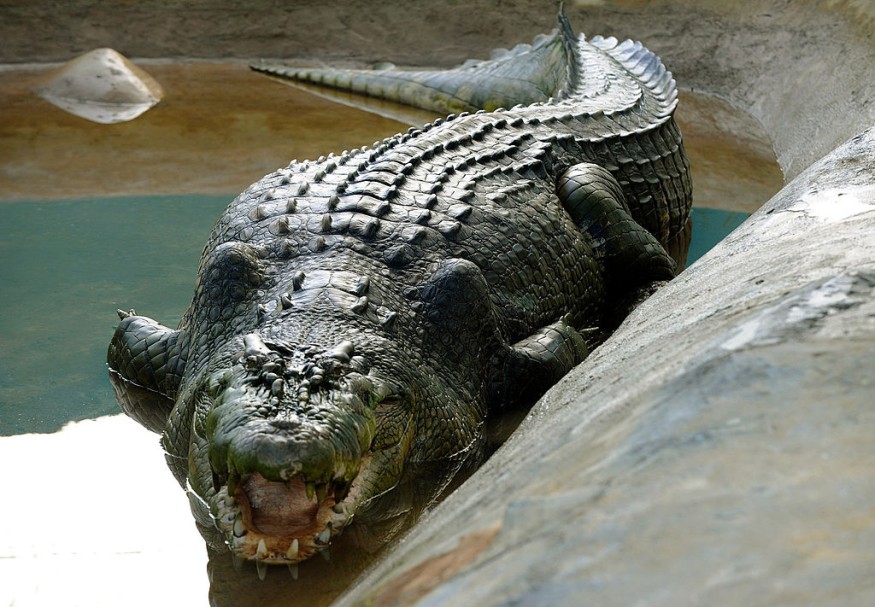The saltwater crocodile is known to show aggression towards people and is responsible for many attacks each year. Oceania said that crocodiles use their powerful jaws and strong teeth up to five inches (13 cm) long to create the deadliest bite in the animal kingdom. Crocodiles usually lurk along the water's edge and plunge at any potential prey approaching their territory.
In 2011, a crocodile was captured in the municipality of Bunawan, Philippines, after being suspected of eating a fisherman and cutting off a 12-year-old schoolgirl's head. It was later considered the largest saltwater crocodile in captivity. However, two years, in February 2013, the crocodile named Lolong died due to stress and fungal infection.

Lolong Beats Previous World Record-Holder
At 20.24 feet (6.17 meters) long, the Guinness World Records announced in 2012 that Lolong is now officially the largest saltwater crocodile in captivity ever. The Guinness listing is based on datasets from experts, cush as crocodile zoologist Adam Britton who measured Lolong in the new Bunawan Eco-Park and Research Center.
Britton wrote in his blog that he was initially wary of the claims of Lolong's record-breaking size but congratulated the crocodile "for amazing the skeptic in me." But he was not expecting ever to see a crocodile greater than 20 feet long.
The previous world record-holder was a 17.97-foot-long (5.48-meter-long) saltwater crocodile caught in Australia. It was two feet shorter than the one caught in the Philippines.
Britton said that the 2,370-pound (1,075-kilogram) Lolong may significantly impact crocodile conservation in the country because it prompted the senate to introduce a resolution that strengthens laws in protecting the saltwater crocodile and the critically endangered Philippine crocodile.
ALSO READ : Crocodile Had Dinosaur For Its Last Meal Based On 95-Million Year Old Fossil, Study Claims
The Death of the Largest Saltwater Crocodile in Captivity Ever
Unfortunately, Lolong died in February 2013, just two years after it was captured. According to the Daily Star, he was found in his enclosure upside down with a bloated stomach.
Lolong's death gained interest once more after someone posted a photo of a man poking him with a stick when he was still alive on Reddit in remembrance of his captivity and heartbreaking death.
"Lolong was the largest saltwater crocodile in captivity. He died because of 'fungal infection' and 'stress' two years after being captured," the caption read.
Local reports at the time of his captivity and death said that Lolong was originally hunted for three weeks after killing one person in the area. The largest saltwater crocodile was suspected of eating a fisherman who went missing and biting a 12-year-old girl whose head was found in 2009. After being captured, Lolong became the star attraction of the eco-tourism park where he stayed.
Bunawan municipality Mayor Edwin Elorde said in an interview with a local newspaper that the crocodile was ill for several weeks before its death. He noted that Lolong refused to eat since a month before dying, and they also noticed a change in the color of its feces. There wisalso an unusual ballooning of the reptile's belly.
A local veterinarian claimed that the unseasonably cold weather could also have caused the downward spiral of the crocodile's health. Lolong's remains were preserved and displayed at the National Museum of Natural History in Manila.
One netizen who went to see Lolong's remains years ago said it was "very, very big" and even compared the encounter to "seeing a dinosaur creation," except that he knew — crocodiles still live unlike dinosaurs that went extinct millions of years ago.
RELATED ARTICLE: What To Do When Faced With A Croc? 6.5ft Saltwater Crocodile Seen in Popular Swimming Spot
Check out more news and information on Crocodile in Science Times.












